Pilates: More Than Just a Workout – It’s a Lifestyle
Pilates, a form of exercise developed by Joseph Pilates in the early 20th century, has gained immense popularity for its transformative effects on the body and mind. Additionally, This unique fitness method combines elements of strength training, flexibility, and mindfulness, making it a holistic approach to physical well-being. In this article, we will delve into the origins, principles, benefits, and different variations. Discover the transformative power of Pilates exercises, specifically designed to strengthen your core and enhance your overall body fitness. It Explore wall for a unique twist on this beloved practice.
Origins of Pilates
Joseph Pilates, born in Germany in 1883, was a sickly child who overcame his frailty through the pursuit of various physical disciplines. Subsequently, drawing inspiration from yoga, gymnastics, and martial arts, He developed a system of exercises aimed at improving strength, flexibility, and posture. Additionally, He believed in the interconnectivity of mind, body, and spirit, which is evident in the core principles of Pilates.
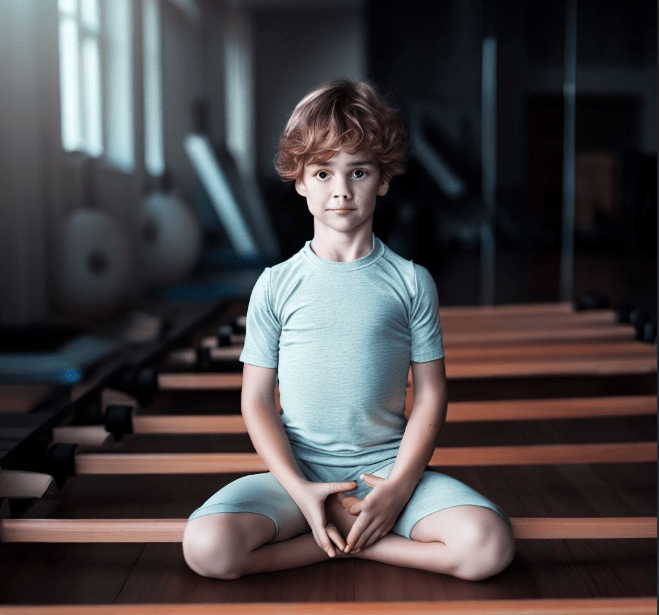
Principles of Pilates
Concentration:
It emphasizes focused awareness on each movement, ensuring precise and controlled execution. This cultivates a deep mind-body connection.

Control:
In contrast to high-intensity workouts, It prioritizes controlled movements over rapid, erratic motions. Additionally, This controlled approach helps prevent injuries and ensures maximum effectiveness.

Centering:
The “powerhouse,” as Pilates called it, refers to the core muscles – the abdomen, lower back, hips, and buttocks. Additionally, All movements originate from and revolve around this center.

Precision:
Every movement in Pilates has a specific purpose. It’s not about the quantity of repetitions, but the quality of each movement.

Breath:
Proper breathing is crucial in Pilates. Additionally, It helps oxygenate the body, engage the core, and maintain focus. Joseph Pilates emphasized the importance of full, deep breaths.

Flow:
Movements in Pilates are designed to flow seamlessly from one to the next. Additionally, This creates a graceful and harmonious workout routine.
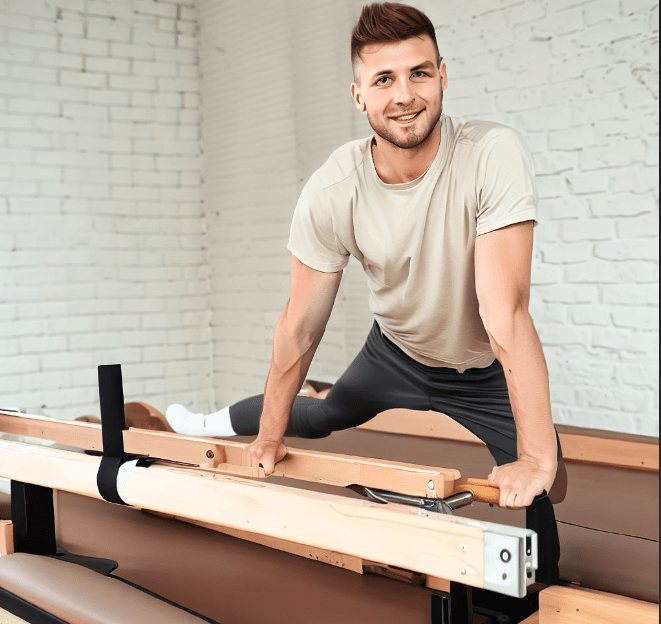
Benefits of Pilates
Improved Core Strength:
Pilates targets the deep core muscles, resulting in better posture, reduced back pain, and increased overall stability.
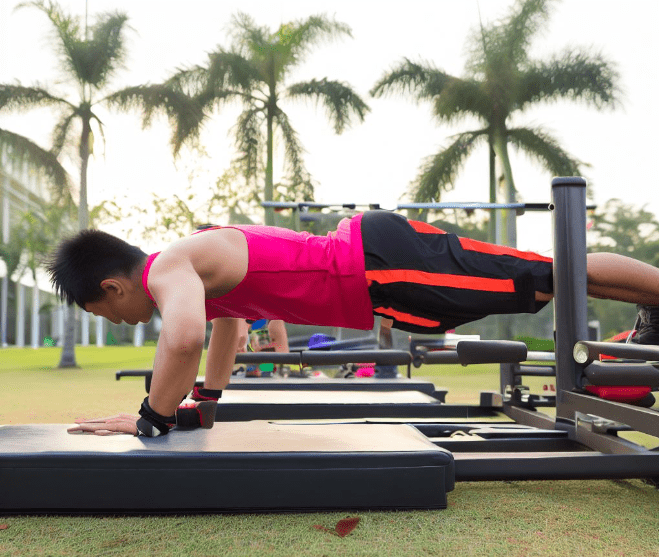
Enhanced Flexibility:
Moreover, regular practice of Pilates exercises helps increase range of motion and flexibility, making it an excellent complement to other forms of exercise.
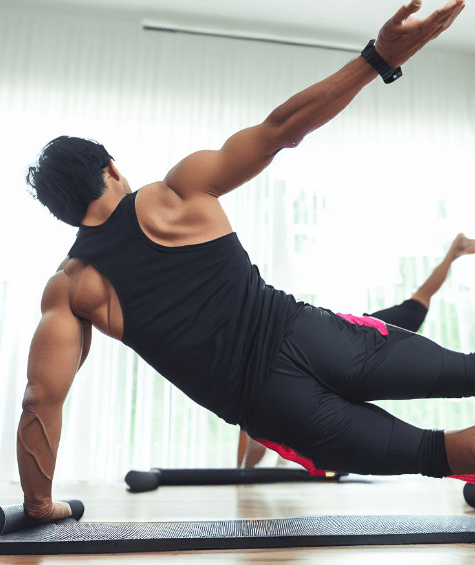
Increased Muscle Tone:
By utilizing resistance through body weight and specialized equipment, it leads to lean, toned muscles without bulk.

Stress Reduction:
The mindful approach to movement and breath in Pilates encourages relaxation and reduces stress levels.

Improved Posture and Alignment:
Pilates exercises train the body to maintain proper alignment, which is essential for preventing injuries and promoting long-term well-being.
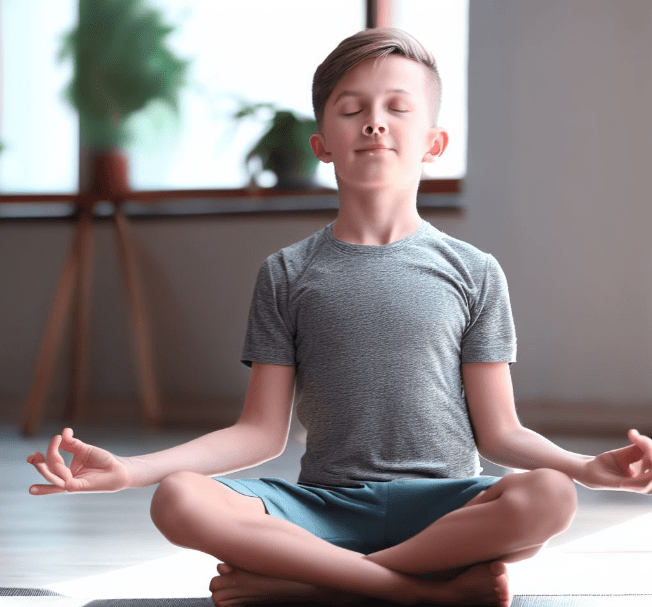
Enhanced Mind-Body Connection:
The concentration and mindfulness required in Pilates foster a stronger connection between the mind and body, leading to improved body awareness and coordination.

Types of Pilates
https://www.sweatboxyoga.com.sg/kinds-of-pilates/
Mat Pilates:
Mat Pilates is performed on a cushioned mat, using only body weight for resistance. Additionally, It focuses on floor exercises, making it accessible to people of all fitness levels.

Reformer Pilates:
In contrast, the reformer is a specialized machine that provides resistance through a system of springs and pulleys. Additionally, It offers a wide range of exercises and allows for precise adjustments to accommodate different body types and fitness levels.

Cadillac/Trap Table Pilates:
On the other hand, this advanced form which utilizes a large piece of equipment known as the Cadillac or Trap Table. Additionally, It offers a comprehensive range of exercises, often incorporating additional props.

Chair Pilates:
Additionally, the chair is a compact, versatile piece of equipment that provides a unique challenge for strength and stability training.

Wall Pilates Challenge
“A wall Pilates challenge is a unique way to incorporate Pilates exercises using a wall for support and resistance. Additionally, this type of workout can be both fun and effective in targeting specific muscle groups while also improving balance and stability. Now, let’s dive into a suggested wall Pilates challenge for you:
Duration: 30 days
Pilates Equipment Needed:
- A clear wall space
- Yoga mat (optional)
- Comfortable workout attire
- Water bottle for hydration
Instructions:
Day 1-5: Foundation
Wall Sit with Leg Lifts (3 sets of 10 reps each leg)
- First, stand with your back against the wall, slide down into a squat position.
- Next, lift one leg straight out in front of you and lower it back down without touching the ground.
- Remember to alternate legs.
Pilates Bridge (3 sets of 15 reps)
- Begin by lying on your back with feet against the wall and knees bent.
- Lift your hips off the ground, engaging your glutes and core.
- Lower back down with control.
Wall Roll Downs (3 sets of 12 reps)
- Start by standing with your back against the wall, feet shoulder-width apart.
- Then, roll down through your spine, reaching towards the floor.
- Finally, roll back up with control.
Day 6-15: Core Intensity
Wall Plank (Hold for 30 seconds to 1 minute, repeat 3 times)
- Face the wall and place your hands shoulder-width apart.
- Step your feet back into a plank position.
- Keep your body straight and engage your core.
Pilates Toe Taps (3 sets of 15 reps)
- Lie on your back with legs up against the wall.
- Lower one leg towards the ground, tapping your toes on the floor.
- Alternate legs.
Wall Side Plank (Hold for 30 seconds to 1 minute on each side, repeat 3 times)
- Lie on your side with your feet against the wall.
- Lift your hips off the ground, balancing on your forearm.
Day 16-25: Flexibility and Balance
Roll Ups (3 sets of 12 reps)
- Lie on your back with legs up against the wall.
- Engage your core and roll up to a seated position.
Pilates Lunge Stretch (Hold for 30 seconds on each leg, repeat 3 times)
- Stand a few feet away from the wall.
- Step one foot back and press your heel towards the floor.
V-Sit (Hold for 30 seconds to 1 minute)
- Sit with your back against the wall and legs extended.
- Lift your legs up to form a V-shape.
Day 26-30: Full Body Integration
Squat with Rotation (3 sets of 12 reps)
- Begin with a wall sit.
- Then, rotate your upper body to the right, then back to center, and finally to the left.
Pilates Wall Push-Ups (3 sets of 10 reps)
- Face the wall and place your hands shoulder-width apart.
- Perform push-ups with control.
Teaser (3 sets of 8 reps)
- Lie on your back with legs up against the wall.
- Roll up, lifting your legs towards the ceiling.
Remember to warm up before each session and cool down/stretch after. Additionally, Always listen to your body and modify exercises as needed. Stay consistent and enjoy the challenge!”
Conclusion
Additionally, It offers a holistic approach to fitness and well-being, combining strength, flexibility, and mindfulness. Its principles of concentration, control, centering, precision, breath, and flow provide a framework for achieving physical and mental harmony. Whether practiced on a mat or with specialized equipment, it can benefit individuals of all ages and fitness levels. By incorporating it into a regular exercise routine, one can experience improved core strength, enhanced flexibility, increased muscle tone, reduced stress levels, and a heightened mind-body connection. Additionally, Embracing the philosophy of It can lead to a more balanced and fulfilling approach to health and fitness.
